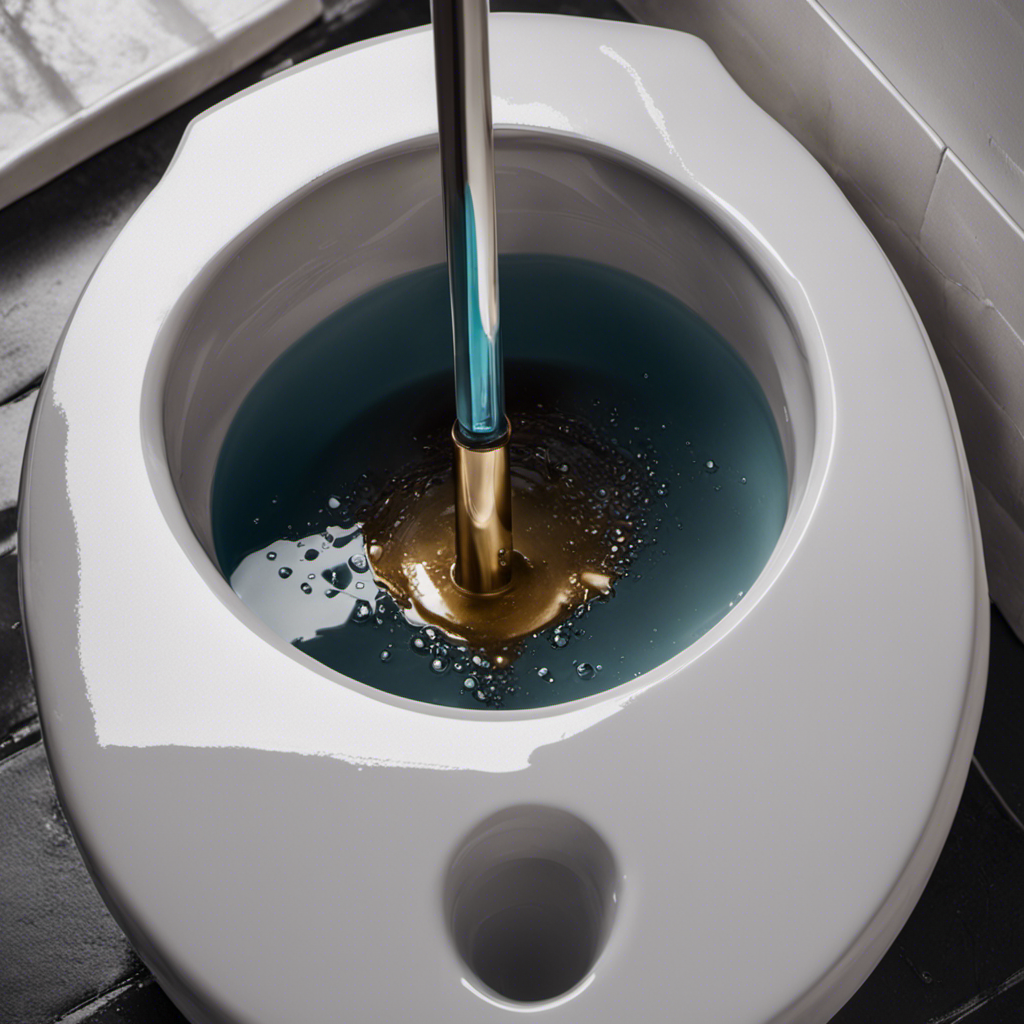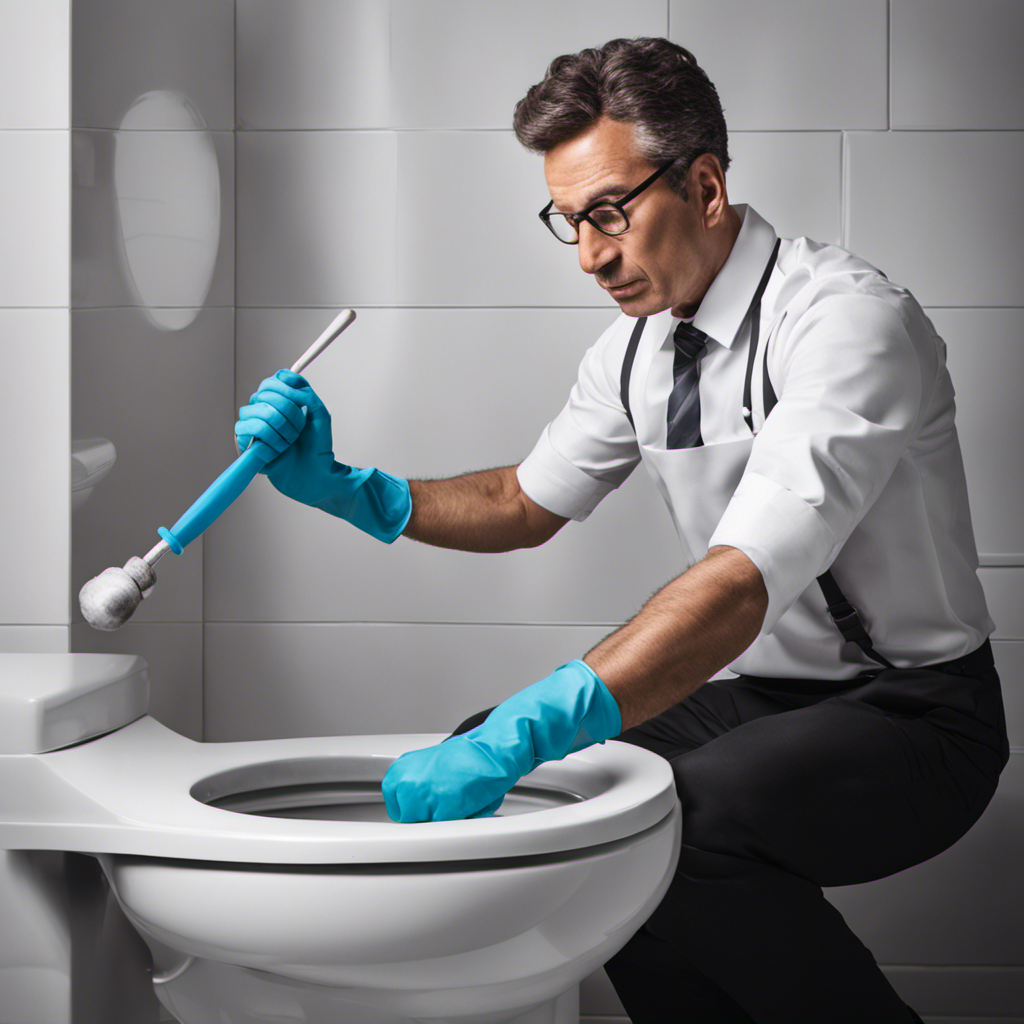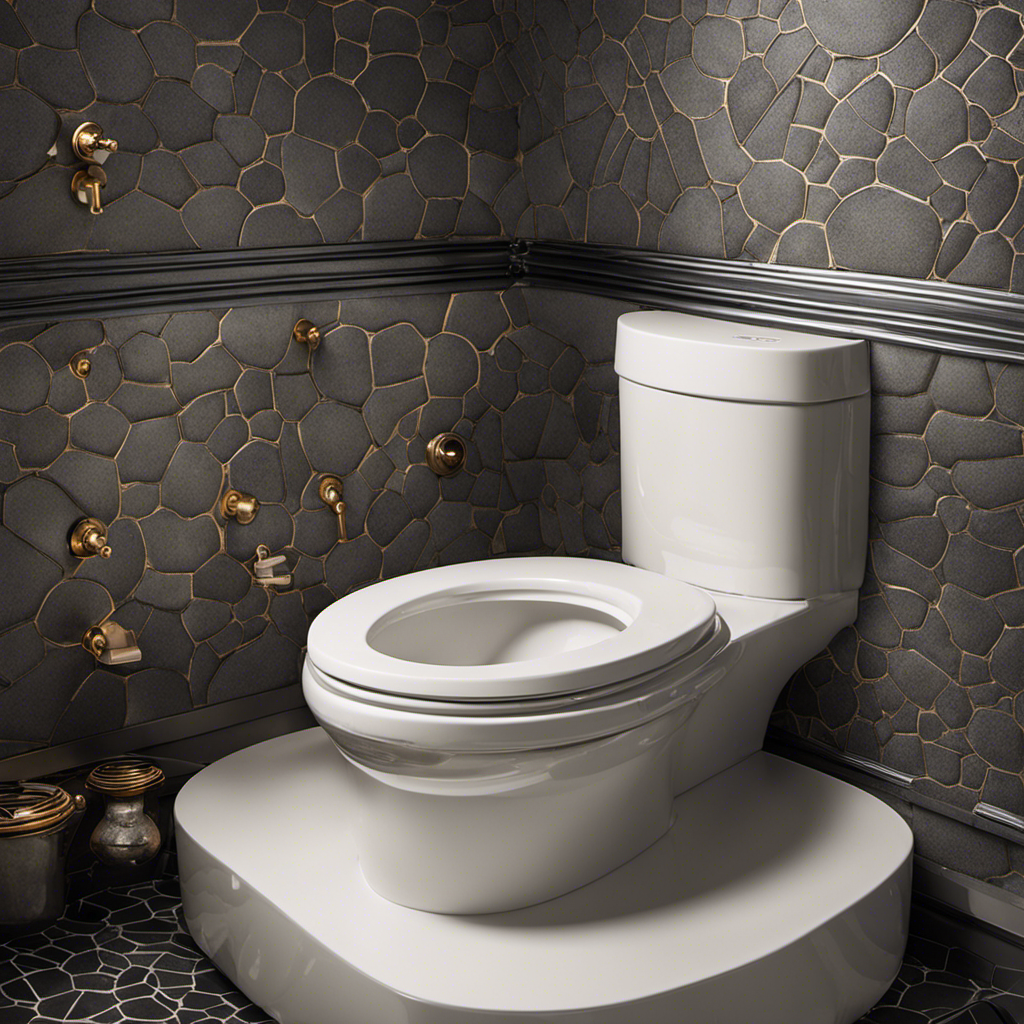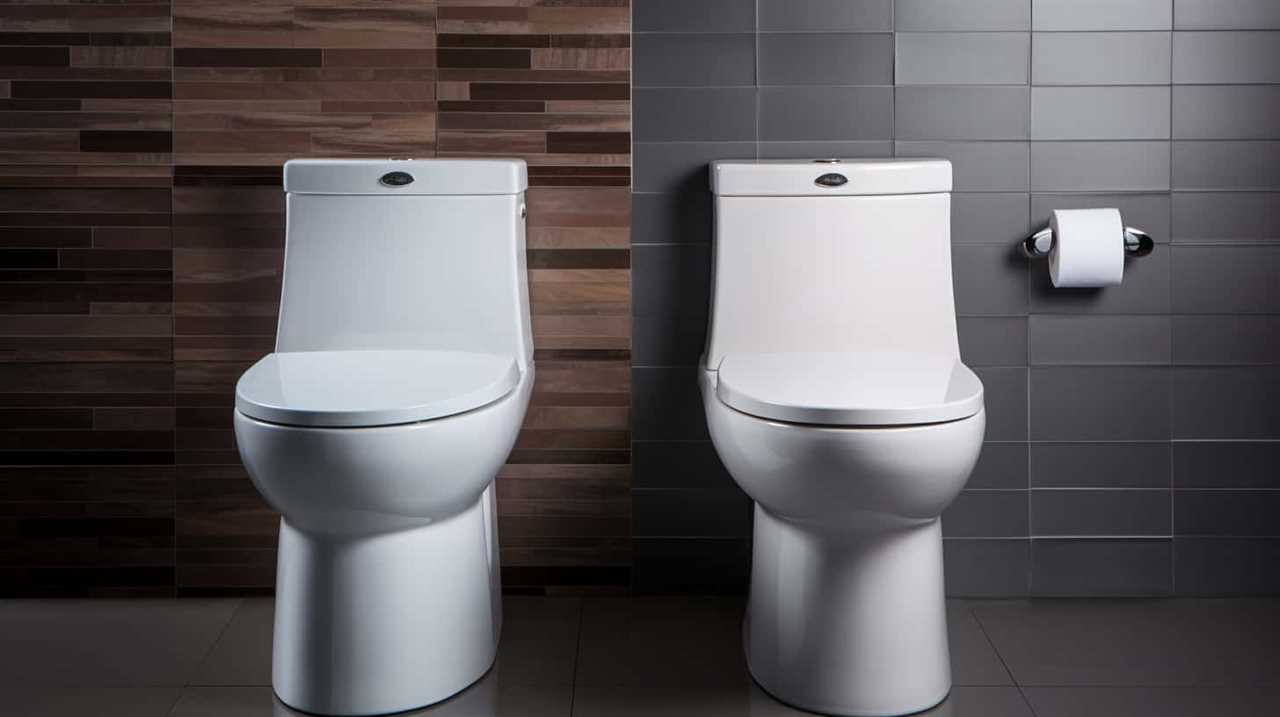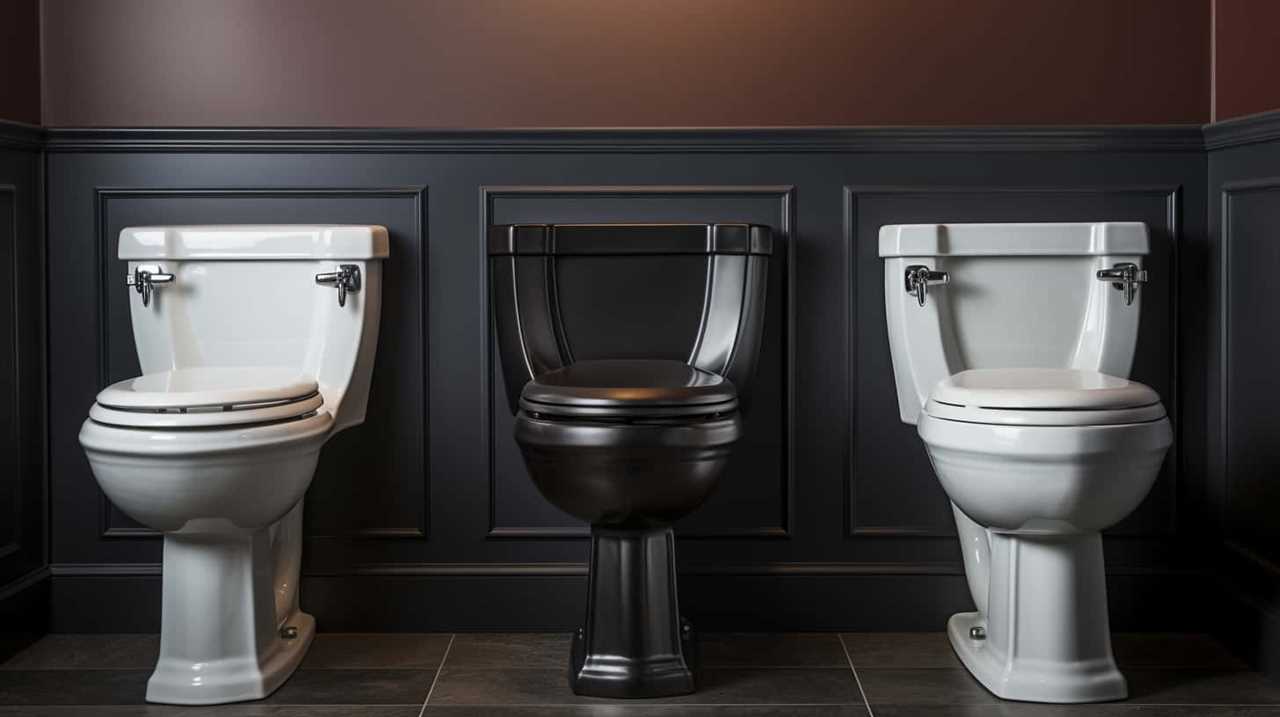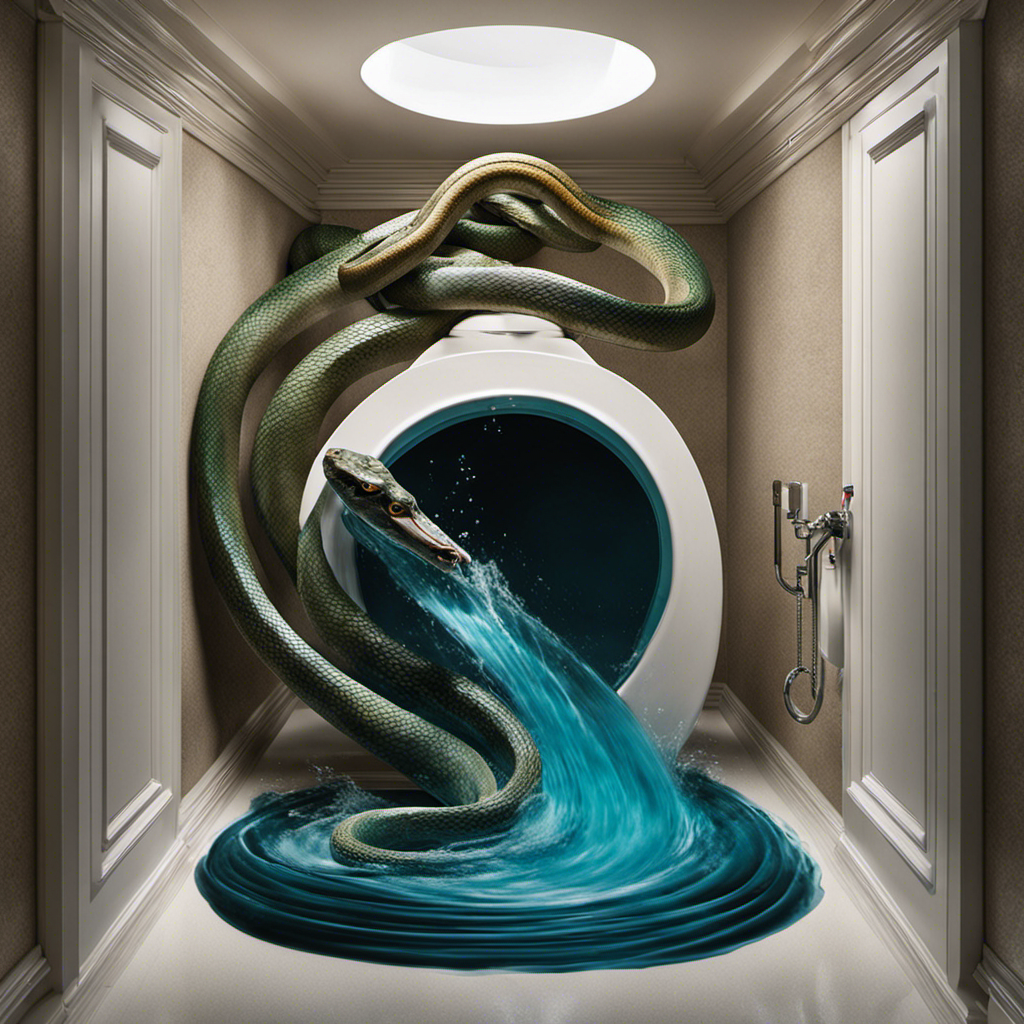As I stood in front of the overflowing toilet, panic washed over me. The water was rising, and I had no idea what to do.
But then, I remembered the invaluable advice of a seasoned plumber. With a deep breath, I sprang into action, armed with the necessary tools and a determination to conquer this clog.
In this article, I will guide you through the step-by-step process of how to unplug a toilet, providing you with the knowledge and confidence to tackle any plumbing crisis that may arise.
Key Takeaways
- Gather the necessary tools and materials such as a plunger, bucket, gloves, and toilet auger
- Familiarize yourself with how to use the tools properly
- Use a plunger to create a seal around the drain hole and vigorously push and pull to create suction
- If necessary, use a drain snake or call a professional plumber if the clog persists.
Tools and Materials Needed
To unplug a toilet, you’ll need a plunger and a bucket.
The first tool you’ll use is the toilet plunger. Make sure it has a flange, which creates a better seal. Place the plunger over the drain hole, ensuring it covers the entire opening. Then, apply firm, downward pressure and rapidly push and pull the plunger to create suction. Repeat this motion several times until the water starts draining.
If the plunger doesn’t work, the next tool to try is a drain snake. Insert the snake into the toilet drain and rotate it clockwise while applying gentle pressure. This will help break up any clogs.
If the clog persists, it may be necessary to call a professional plumber.
Now that you know which tools to use, let’s move on to preparing for the unplugging process.
Preparing for the Unplugging Process
Before starting, it’s important to gather all the necessary tools for unclogging a toilet. Here’s a quick list of what you’ll need:
-
Plunger: This is the most common tool used to unclog toilets. Make sure you have a sturdy plunger with a good suction cup to create the necessary pressure.
-
Rubber gloves: It’s important to protect your hands from any potential mess. Rubber gloves will keep your hands clean and hygienic during the unclogging process.
-
Bucket: Having a bucket nearby is useful for collecting any excess water that may spill out during the unclogging process. It’s always better to be prepared and avoid any additional mess.
-
Toilet auger: If the plunger doesn’t work, a toilet auger can be used to reach deeper clogs. This tool has a long, flexible cable that can break up and remove stubborn blockages.
Taking the time to gather these tools before starting the unclogging process will ensure that you have everything you need at your fingertips. It’s important to be well-prepared to effectively tackle any toilet clog and minimize potential issues.
Step-by-Step Instructions
Once you have gathered all the necessary tools, it’s time to begin the step-by-step instructions for unclogging your toilet. Before we get started, let’s take a look at some important safety precautions to keep in mind. First, make sure to wear gloves to protect yourself from any potential bacteria or germs. Next, ensure that the bathroom is well-ventilated to avoid inhaling any unpleasant odors. Now, let’s move on to the unplugging techniques. In the table below, you will find a breakdown of each step involved in the process. Follow these instructions carefully to effectively unclog your toilet.
| Step | Instructions |
|---|---|
| 1 | Use a plunger to create a seal around the drain hole. |
| 2 | Push and pull the plunger vigorously to create suction and dislodge the clog. |
| 3 | Repeat the plunging motion until the water starts to drain properly. |
Troubleshooting Common Issues
If the initial plunging doesn’t work, you can try alternative methods such as using a toilet auger or a mixture of hot water and dish soap. Here are four troubleshooting tips to help you effectively unplug a toilet:
-
Understanding toilet anatomy: Knowing how your toilet works can help identify and address the issue more efficiently. Familiarize yourself with the components, such as the flapper, flush valve, and trapway.
-
Signs of a serious plumbing problem: While a clogged toilet is common, certain signs may indicate a more serious issue. If you notice recurring clogs, gurgling sounds, or sewage backup in other drains, it’s important to consult a professional plumber.
-
Use a toilet auger: If the plunger doesn’t do the trick, a toilet auger can be a helpful tool. Insert the auger into the drain and rotate the handle to break up the clog.
-
Hot water and dish soap mixture: Pouring a mixture of hot water and dish soap into the toilet bowl can help dissolve the clog. Allow it to sit for a few minutes before attempting to flush.
Tips for Preventing Future Clogs
To prevent future clogs, regularly maintaining your plumbing system is essential. Here are some maintenance tips to keep your toilet running smoothly.
First, avoid flushing anything other than toilet paper down the toilet. Items like wipes, feminine hygiene products, or paper towels can easily cause clogs.
Additionally, consider using eco-friendly alternatives to traditional toilet paper, such as bamboo or recycled toilet paper, which break down more easily.
Another important step is to periodically check the water flow in your toilet. If you notice a weak flush, it could indicate a partial clog. In this case, you can try using a plunger to remove the obstruction.
Lastly, scheduling regular inspections with a professional plumber can help identify any potential issues before they become major problems.
Conclusion
In conclusion, I hope this guide has provided you with the necessary knowledge and confidence to tackle the common plumbing issue of unplugging a toilet.
Just like a plumber who carefully analyzes and solves problems, it is important to approach this task with a solution-oriented mindset.
By following the step-by-step instructions and troubleshooting any potential issues, you can successfully restore the proper function of your toilet.
Remember to also implement preventive measures to avoid future clogs, just as a professional plumber would recommend.
Happy unclogging!
